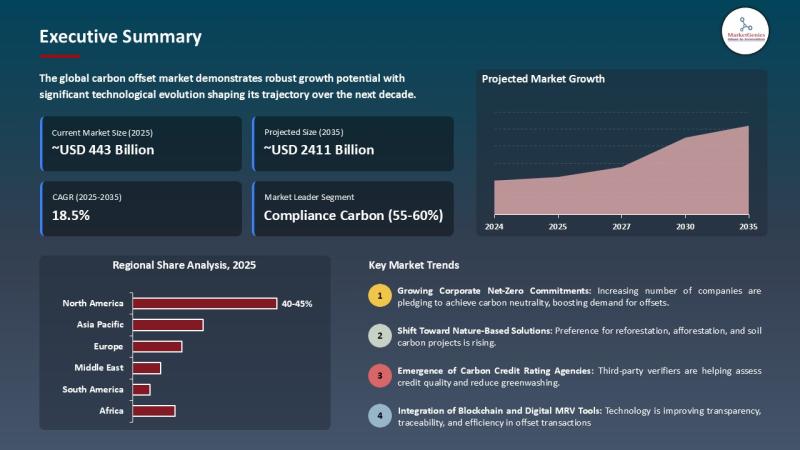Analysis of Brazil’s Per Capita Income Growth and its Alignment with Sustainable Development Goals (SDGs)
Overview of Recent Economic Performance (2020-2024)
A recent analysis of Brazil’s economic performance reveals that the average annual growth in per capita income of 1.69% over the past five years has been predominantly driven by an expansion in employment rather than improvements in productivity. This growth model presents significant challenges to achieving long-term sustainable development.
- Employment Rate: Accounted for 67.45% of the growth.
- Productivity Per Hour Worked: Contributed only 20.1% to the growth.
- Average Working Hours: Added 14.2% to the increase.
- Labor Force Participation: Had a minimal positive impact of 1.2%.
- Demographic Bonus: Contributed negatively, subtracting 3% from growth.
SDG 8: Decent Work and Economic Growth – A Critical Assessment
The current economic trajectory raises concerns regarding the sustainability of growth and the quality of work, central tenets of SDG 8. The heavy reliance on job creation, while positive for reducing unemployment, is approaching its natural limits.
- Unsustainable Growth Model: Experts warn that this labor-driven growth is cyclical and not structurally sound for future prosperity. With unemployment at historic lows (5.6% in the quarter ending August), Brazil is approaching a “labor supply wall,” which will limit further gains and could pressure wages.
- Productivity Deficit: The minimal contribution of productivity (0.34 percentage points) to the 1.69% growth rate is a direct challenge to SDG Target 8.2, which calls for achieving higher levels of economic productivity through diversification, technological upgrading, and innovation.
- Regional Disparities: While the national model is strained, states like Santa Catarina (2.2% unemployment) demonstrate that a focus on human capital and technology-intensive sectors can foster more efficient labor use and higher productivity, aligning better with SDG 8.
The Productivity Challenge and its Link to SDG 9 and SDG 4
Brazil’s long-term failure to significantly boost productivity is a structural impediment to sustainable development. Addressing this requires a concerted focus on innovation (SDG 9) and education (SDG 4).
- Innovation and Infrastructure (SDG 9): The economy’s inefficiency persists despite some reforms. Future productivity gains could be unlocked by advancing tax reform, ratifying trade agreements like the Mercosur-EU deal, and strategically adopting artificial intelligence.
- Quality Education (SDG 4): Education is identified as a critical weakness. While human capital has improved, a skills gap remains, potentially hindering Brazil’s ability to capitalize on technological advancements like AI. Enhancing education is crucial for improving productivity and ensuring the workforce is prepared for higher-value jobs, directly supporting SDG Target 4.4.
Demographic Shifts and Social Infrastructure: Implications for SDG 5 and SDG 8
Changing demographics and social structures present both challenges and opportunities for inclusive growth. The reversal of the demographic bonus, which once accounted for 70% of per capita GDP growth in the 1990s, now detracts from it.
- Negative Demographic Bonus: The aging population has turned the demographic bonus into a negative factor (-0.05 percentage points), meaning economic growth can no longer rely on a growing working-age population.
- Gender Equality (SDG 5): A significant opportunity lies in increasing the labor force participation of women. As primary caregivers, their economic potential is often limited. Investing in social infrastructure, such as public daycare centers, would support SDG Target 5.4 (recognize and value unpaid care work) and unlock a crucial source of labor, contributing to sustained economic growth.
Policy Recommendations for Sustainable and Inclusive Growth
To transition from a cyclical, labor-dependent model to a sustainable, productivity-driven one, policy actions must align with the Sustainable Development Goals.
- Enhance Human Capital (SDG 4): Prioritize investment in quality education and vocational training to close the skills gap and prepare the workforce for a technology-driven economy.
- Promote Innovation and Modernization (SDG 9): Implement structural reforms, including the tax system, and foster an environment conducive to technological adoption and international trade to boost national productivity.
- Strengthen Social Infrastructure (SDG 5): Develop support systems, such as affordable childcare, to enable greater female participation in the labor force, promoting both gender equality and economic resilience.
- Reorient Economic Strategy (SDG 8): Shift focus from short-term employment gains to long-term productivity improvements as the primary engine for decent work and sustainable economic growth.
Analysis of Sustainable Development Goals (SDGs) in the Article
1. Which SDGs are addressed or connected to the issues highlighted in the article?
-
SDG 8: Decent Work and Economic Growth
This is the most central SDG in the article. The entire text revolves around the components of Brazil’s per capita income growth, focusing on employment rates, unemployment, labor productivity, and the sustainability of this economic growth model. It explicitly discusses job growth as the primary driver of income, the low contribution of productivity, and the challenges of reaching full employment, which are core themes of SDG 8.
-
SDG 5: Gender Equality
The article connects labor force participation to gender equality. It notes that a past rise in participation was due to the “growing involvement of women in the labor force since the 1980s.” It further suggests that future growth could be unlocked by increasing female participation, identifying that “Women remain the primary caregivers in families” and that improving infrastructure like “daycare centers” could help them join the workforce.
-
SDG 4: Quality Education
The article directly links education to economic productivity, a key issue it highlights. It states that “Education is widely seen as one of Brazil’s biggest weaknesses when it comes to productivity” and that a “lack of skilled workers” could prevent the country from benefiting from technological advances like AI. Conversely, it mentions that “Higher levels of education also support labor force participation,” connecting education directly to the labor market dynamics discussed.
-
SDG 9: Industry, Innovation, and Infrastructure
This goal is relevant through the discussion of productivity, technology, and infrastructure. The article points to “tech firms” in Santa Catarina as a reason for higher productivity and lower unemployment in that state. It also discusses the potential impact of “advances in artificial intelligence” on productivity. Furthermore, the suggestion to build “support infrastructure, such as providing more daycare centers” to boost labor supply connects directly to the infrastructure component of this SDG.
2. What specific targets under those SDGs can be identified based on the article’s content?
-
SDG 8: Decent Work and Economic Growth
- Target 8.1: Sustain per capita economic growth in accordance with national circumstances. The article is fundamentally an analysis of Brazil’s per capita income growth, which it states grew at an “average annual rate of 1.69%” between 2020 and 2024.
- Target 8.2: Achieve higher levels of economic productivity through diversification, technological upgrading and innovation. The article’s main concern is the low contribution of productivity to growth (“just 20.1%”) and it explores ways to boost it through education, technology (AI), and structural reforms.
- Target 8.5: By 2030, achieve full and productive employment and decent work for all women and men. The article discusses Brazil’s historically low unemployment rate (5.6%) and the approach of a “labor supply wall,” which directly relates to the concept of full employment.
-
SDG 5: Gender Equality
- Target 5.4: Recognize and value unpaid care and domestic work through the provision of public services, infrastructure and social protection policies. This is directly addressed when the article suggests that because “Women remain the primary caregivers,” providing “support infrastructure, such as providing more daycare centers” is a way to “unlock more labor supply.”
- Target 5.5: Ensure women’s full and effective participation and equal opportunities for leadership in political, economic and public life. The article references the positive historical impact of the “growing involvement of women in the labor force” and discusses increasing their participation as a future source of growth.
-
SDG 4: Quality Education
- Target 4.4: By 2030, substantially increase the number of youth and adults who have relevant skills, including technical and vocational skills, for employment, decent jobs and entrepreneurship. The article highlights a “lack of skilled workers” as a barrier to capitalizing on AI and notes that states with higher “human capital” and “tech firms” have better economic outcomes, pointing to the need for relevant skills.
3. Are there any indicators mentioned or implied in the article that can be used to measure progress towards the identified targets?
- Annual growth rate of real GDP per capita (Indicator 8.1.1): The article explicitly states that “Between 2020 and 2024, per capita income grew at an average annual rate of 1.69%.”
- Growth rate of productivity (related to Indicator 8.2.1): The article quantifies the contribution of productivity to income growth, stating it “accounted for just 20.1%” of the increase and contributed “just 0.34 percentage points” to the annual growth rate.
- Unemployment rate (Indicator 8.5.2): The article provides specific figures for the unemployment rate, mentioning it “stood at 5.6%” nationally and giving state-level data for Santa Catarina (2.2%), Mato Grosso (2.8%), and Mato Grosso do Sul (2.9%).
- Employment rate: This is used extensively as a key metric. The article states that “94.4% of the working-age population was employed” and that job growth accounted for “Nearly 70%” of the increase in per capita income.
- Labor force participation rate: This is identified as one of the five factors analyzed, contributing “1.2% of the growth.” The article also discusses the potential to increase it, particularly among women.
- Proportion of time spent on unpaid care work (implied by Indicator 5.4.1): The article implies this indicator by stating that “Women remain the primary caregivers in families—of both children and the elderly,” which limits their labor force participation.
- Human Capital Index: The article mentions a specific, non-SDG indicator, the “Human Capital Index (HCI),” which is used to show that “schooling and work experience in Brazil’s labor force have improved,” linking directly to education and skills.
4. SDGs, Targets, and Indicators Summary Table
| SDGs | Targets | Indicators Identified in the Article |
|---|---|---|
| SDG 8: Decent Work and Economic Growth | 8.1: Sustain per capita economic growth. | Annual growth rate of per capita income (stated as 1.69% from 2020-2024). |
| SDG 8: Decent Work and Economic Growth | 8.2: Achieve higher levels of economic productivity. | Contribution of productivity per hour worked to income growth (stated as 20.1% or 0.34 percentage points). |
| SDG 8: Decent Work and Economic Growth | 8.5: Achieve full and productive employment. | Unemployment rate (5.6% nationally); Employment rate (94.4% of working-age population). |
| SDG 5: Gender Equality | 5.4: Recognize and value unpaid care and domestic work. | The status of women as “primary caregivers” is identified as a barrier to labor participation, implying the high proportion of time they spend on unpaid work. |
| SDG 5: Gender Equality | 5.5: Ensure women’s full and effective participation in economic life. | Labor force participation rate (its rise is linked to the “growing involvement of women”). |
| SDG 4: Quality Education | 4.4: Increase the number of adults with relevant skills for employment. | “Lack of skilled workers” mentioned as a barrier; “Human Capital Index (HCI)” used to measure improvements in schooling and experience. |
Source: valorinternational.globo.com

:strip_icc()/i.s3.glbimg.com/v1/AUTH_63b422c2caee4269b8b34177e8876b93/internal_photos/bs/2025/Z/d/OPUvBaRJ6HG9aYr2rcJg/foto24bra-101-percap-a4.jpg)





